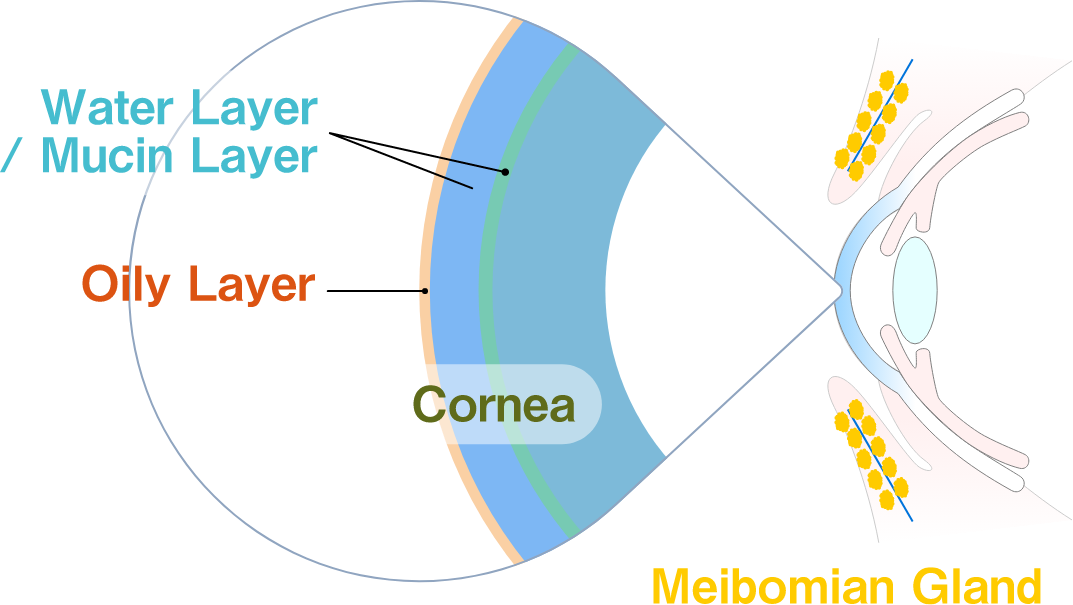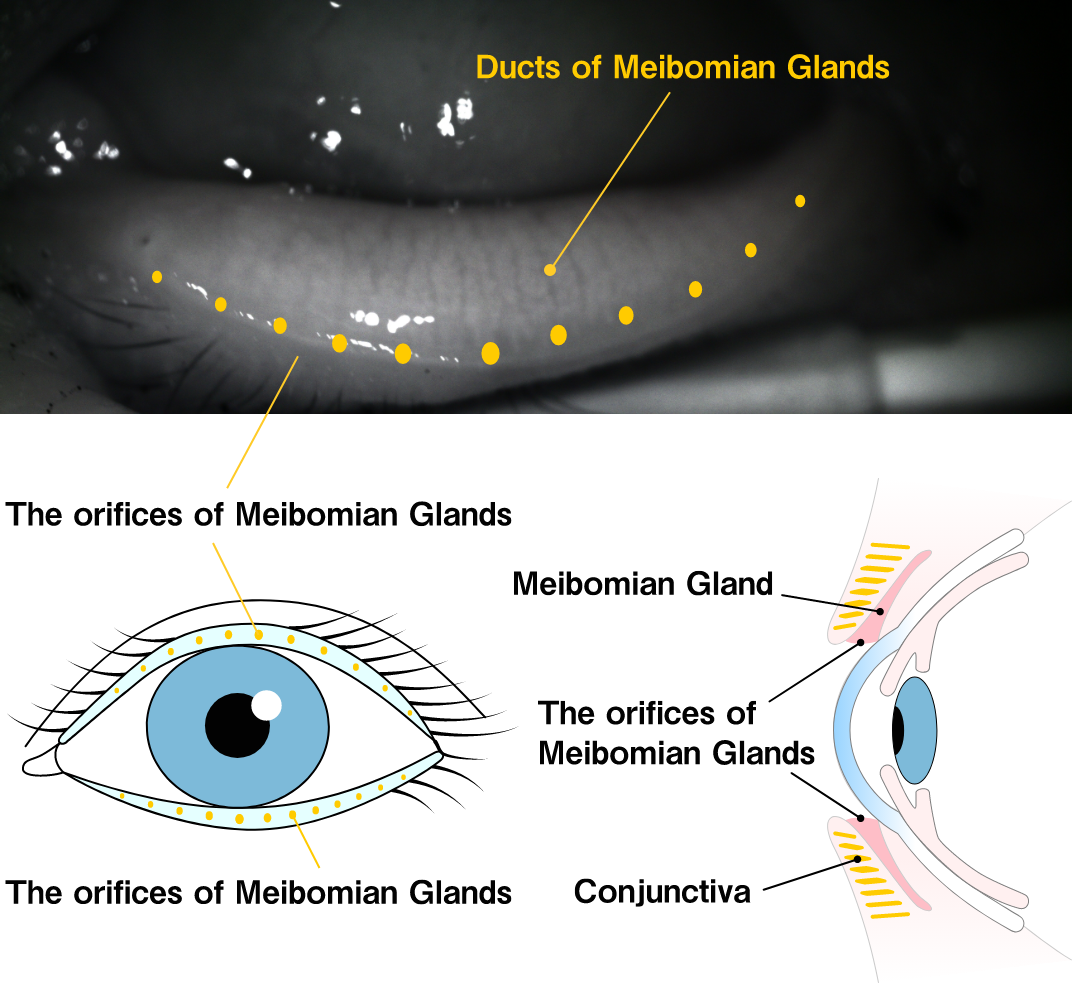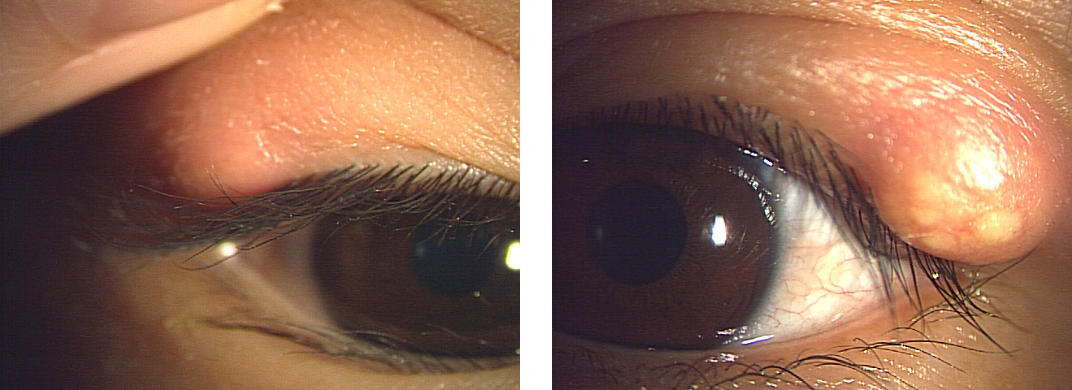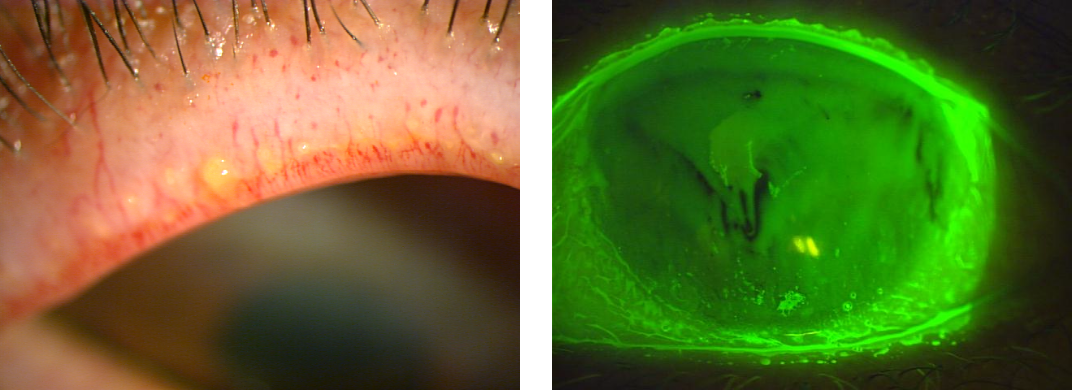
Patients who have been diagnosed with dry eye and have been worried that no matter how much they instilled it did not improve, or that it improved only at the moment of instillation, but the effect disappeared immediately, may be It may be “dry eye with insufficient oil”.
The components of tears consist of approximately 99% water and 1% oil.
Dry eye with insufficient water can be improved by eye drop treatment, but dry eye with insufficient oil will evaporate more and more no matter how much water is instilled unless treatment is applied to supplement the oil. Therefore, no improvement can be expected.
Tear structure

Dry eye with a lack of oil is most often caused by meibomian gland dysfunction (MGD).
The disease name MGD was first proposed in 1980 and is a relatively new term. The meibomian glands are located in the eyelids and secrete the oil of tears, so they have both “eyelid” and “namida” properties.
In other words, MGD is one of the causes of blepharitis (eyelid inflammation) and the main cause of dry eye (the type of dry eye that evaporates water). In 2008, Arita et al. (I am) diagnosed and treated MGD internationally by developing a non-invasive test method (mybography) for observing the shape of meibomian glands using infrared light. Is rapidly possible. It is the dawn of a new era.
Non-invasive Meibography

Meibomian gland-related diseases
- Stye (stye, chalazion)
- A lump caused by an infection of the meibomian glands or a clogged fat. Sometimes with inflammation

- A type of dry eye that lacks fat
- Due to the lack of fat in the tears secreted from the meibomian glands, even if the amount of tears is normal, a feeling of dryness, a feeling of foreign body, and a feeling of tearing occur.

Until now, MGD has been often overlooked by many ophthalmologists as an unexplained inferior complaint of the eye and as a disease for which there is no special treatment, but more than 70% of the elderly suffer from MGD. .. Although it is a disease that does not cause blindness, it causes a decline in quality of life and quality of vision, and has become a problem both at home and abroad as a cause of dry eye after eye surgery. Diagnostic equipment has advanced, and various treatment options have emerged, and the time has come when you can combine and select according to the severity.
Message to everyone
Diagnostic equipment has advanced, and various treatment options have emerged, and the time has come when you can combine and select according to the severity. If you are suffering from dry eye symptoms, or if you don’t know if you have dry eye, but you can’t open your eyes, your eyes hurt, your eyes are heavy, your eyes are tired, etc. Let’s take a closer look at the components of tears (quality and quantity of water and fat).
